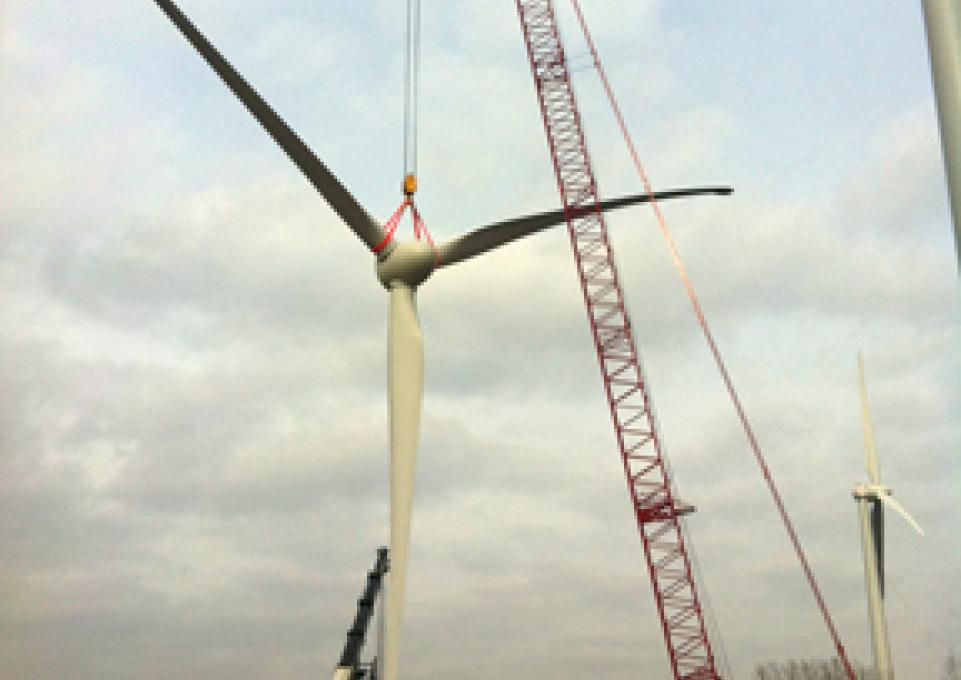
Three students who are studying meteorology at Buffalo State worked with Weather Medic Inc., a local weather consulting firm headed by Jack Kanack, ’83. Shermco Industries retained Weather Medic’s services to help schedule the installation of two wind turbines. The turbines were installed in Racine, Wisconsin, at the corporate headquarters of SC Johnson, manufacturer of household products popular around the globe.
To erect the wind turbines—which stand 415 feet tall—Shermco Industries used a crane. The weather had to be mild enough to operate it safely. “For this project, Shermco Industries required advance notice of at least two hours for inclement weather, including rain and wind speeds greater than 15 miles an hour,” said Kanack. He extended the opportunity for student involvement to Stephen Vermette, coordinator of the meteorology and climatology program and professor in the Geography and Planning Department.
Samantha Thomas, a geography major with a concentration in meteorology, and two students who are taking the meteorology minor, Melissa Bender and Christopher Sica, took part in the project.
“Jack showed us how to look at weather maps, surface observation charts, and the forecast model output, and put the data together to create a real-time forecast,” said Sica. “We provided the forecasts and then monitored the weather so we could warn the construction company if bad weather developed.”
Sica’s interest in meteorology was piqued by lake-effect snowfalls when he moved to Western New York from Baltimore 15 years ago. “The way the snowfall is so localized fascinates me,” he said. “One area can get two feet of snow, but there’s nothing just a few miles away. And the weather here is so varied day to day. You can go from winter to spring and back in 24 to 48 hours.”
Kanack, who has provided weather forecasts to Shermco Industries in the past, said that providing a site-specific forecast to certain industries can have a significant impact on the bottom line. “If we can tell a client that he will be able to get in four hours of work before predicted storms hit his location, he can save money,” said Kanack. In construction, that’s especially true when providing meals and housing for a crew on an out-of-town job.
The meteorology students monitored the weather when the cranes were scheduled to be used. “It takes two hours to secure the crane and get the workers to safety,” said Kanack, pointing out the damage done when a crane was left standing at a Manhattan construction site during superstorm Sandy. Kanack’s service allows him to track a specific weather future, such as wind or hail, within a specific radius.
“This was a great opportunity for our students,” said Vermette. “This partnership gave them the opportunity to gain real-life experience in the business of weather.”
